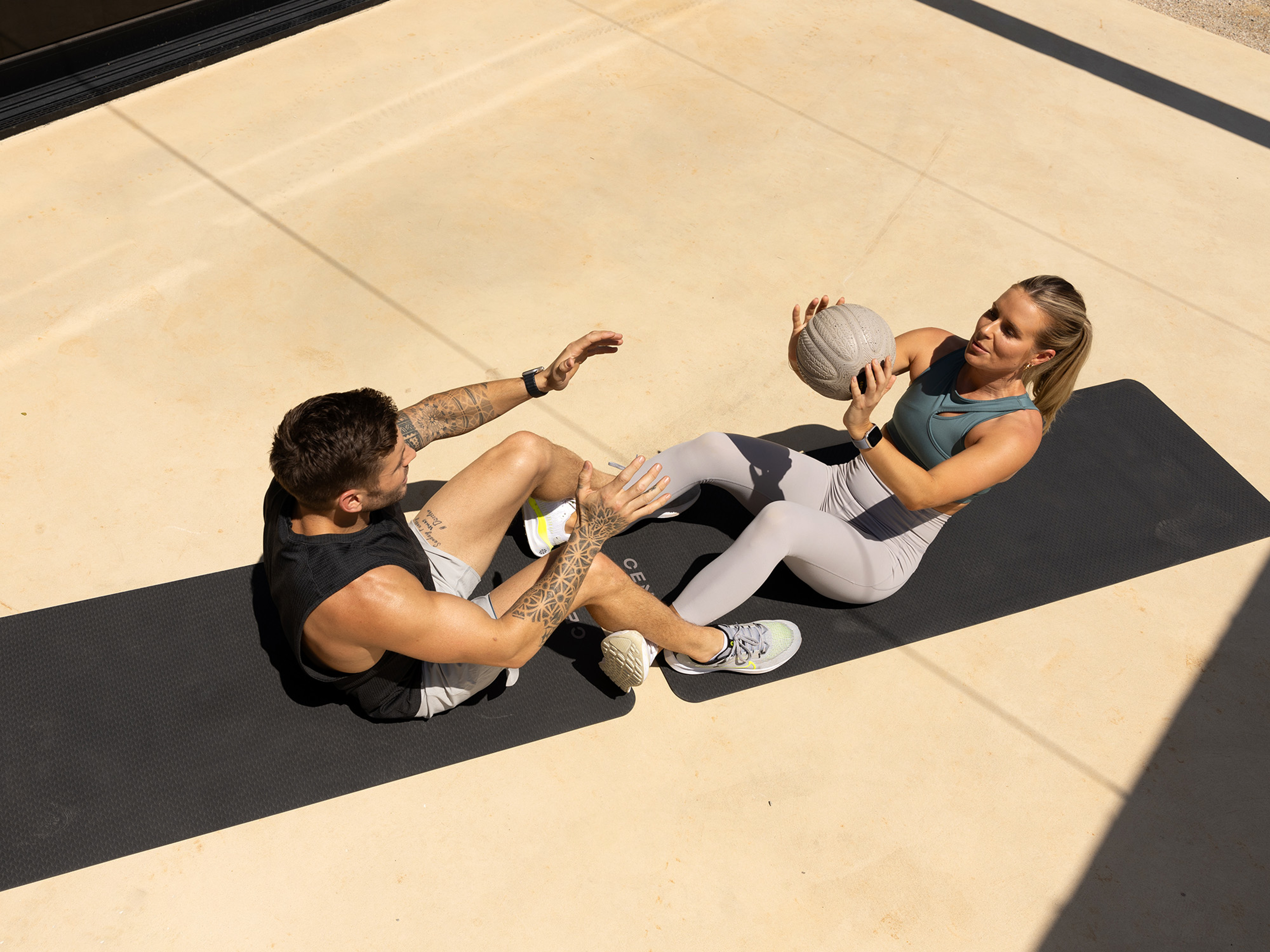The slam ball, often referred to as a medicine ball, is an exceptionally practical and adaptable piece of fitness equipment. It provides resistance and additional mass during dynamic movements. These demanding motions work your entire body from head to toe and rapidly elevate your heart rate.
When you push your muscles to the point of full exhaustion, you’ll build greater muscular power. Increasing muscular power yields a wide range of health and fitness advantages, including:
- greater muscle density
- a faster resting metabolic rate
- improved glucose processing
- enhanced athletic performance
- increased aerobic capacity
- higher maximal strength
- better mental focus
- improved cardiovascular health
- reduced body fat
Women should not worry about developing an overly bulky appearance. That bulky physique is typically caused by consuming excess calories, not from lifting heavy or training intensely. If you are a woman aiming to stay lean and avoid bulk, simply prioritize smart nutrition and calorie choices.
Per the Mayo Clinic, strength training can help you tone your muscles, enhance your look, and combat age-related muscle loss.

Wall Balls
The wall ball exercise quickly raises your heart rate and engages all your major muscle groups.
Equipment needed: medicine ball
Muscles worked: glutes, hamstrings, quads, shoulders, chest
- Stand with your feet about shoulder-width apart, holding the medicine ball, facing a sturdy wall roughly 2 to 3 feet away.
- Bend your knees and lower your hips until your thighs are at a 90-degree angle.
- Drive through your heels and explosively extend upward, throwing the ball against the wall.
- Quickly catch the ball, then descend back into the squat and repeat the movement.
- Complete 5 sets of 10 reps.
Progression
To intensify this movement, incorporate the following progression.
- Begin lying flat on your back in a sit-up starting position, holding the medicine ball overhead near the floor.
- As you sit up, bring the ball down and place it between your feet.
- Press your hands into the ball to help press your body upright.
- You should now be in the squat-start position used for the wall ball exercise.
- Add this segment to every repetition.
- Perform 5 sets of 10 reps.
Ball Slams
Ball slams develop explosive power and strength from the shoulders through the legs.
Equipment needed: medicine ball
Muscles worked: hamstrings, quads, glutes, shoulders, upper back, abdominals
- Stand tall holding the medicine ball in both hands.
- With a firm grip, raise the ball overhead.
- Brace your core tightly, forcefully slam the ball to the ground, and lower into a squat as you follow through.
- Pick the ball up and repeat the full motion (overhead to slam).
- Perform 3 sets of 20 reps.
Slam Ball Situps
Slam ball situps effectively challenge and strengthen your core while boosting your heart rate.
Equipment needed: medicine ball
Muscles worked: abdominals, shoulders
- Lie on your back with knees bent and feet flat on the floor.
- Hold the ball extended above your head with arms straight, the ball just off the ground.
- Engage your core and lift your torso up.
- Bring the ball all the way to your feet.
- Lower yourself back to the starting position.
- Keep the entire movement controlled.
- Concentrate on using your abdominals rather than momentum; do not rest the ball on the floor at any point during the repetition.
Final Thoughts
For optimal results in the shortest timeframe, perform these exercises as outlined at least four times per week. If you’re at an advanced fitness level, aim to train up to six times weekly. Be sure to give your muscles one day per week to rest, recover, and repair. This recovery day is important for allowing your body to adapt and grow from the new demands placed on it.
Slam balls are available in various weights, commonly ranging from 10 to 20 pounds. If you’re new to resistance training, begin with a 10-pound ball and progress to heavier weights as you gain strength and confidence.
After several weeks of consistent training, you should notice changes in your body. You may initially experience muscle soreness (distinct from acute pain), but this will evolve into a feeling of increased strength and empowerment. That sense of accomplishment supports both mental and physical wellbeing — keeping you grounded, balanced, motivated, and physically stronger.


















Leave a Reply
You must be logged in to post a comment.